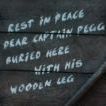To add to the above there are also three other uses of the term "Narrow Boat" in the 1881 census. These are to describe a boat at Runcorn, Cheshire and two boats at Newbold and Dunston, Chesterfield, Derbyshire.
There is seemingly no use of the term in any of the 1841, 1851, 1871, 1891 or 1901 censuses.
In 1911 there are four entries of which three are the use of the term "Narrow Boat Builder" as the occupation in entries for Marple, Cheshire. The other is the listing of "Waterman Narrowboat" as the occupation for a person in hospital in Runcorn, Cheshire.
So, apparently very little use in historic census information - unless someone that actually has access to the records can conduct a better search than I have managed - and notably all in parts of Cheshire and Derbyshire where narrow craft would not necessarily be in the majority in the surrounding area.
JP


